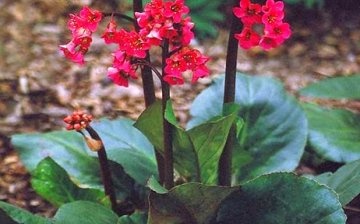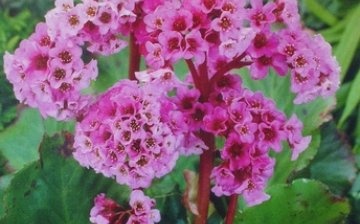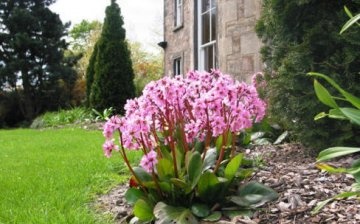Bergenia is an ornamental and medicinal plant
Among the plants that we grow in flower beds as ornamental plants are often very useful for humans, which have medicinal properties. These include badan or as it is also called bergenia - a plant of the saxifrage family. In the wild, this plant loves to huddle on scree or rock crevices.
The bergenia planted on the flower garden will serve as its decoration from early spring, the flowering of some of its species continues for a month and a half. The plant is quite decorative at every stage of its development.
Growing badan does not present any particular problems - the plant easily adapts to any conditions of existence. But to get luxurious bushes, you should add sand, small pebbles and compost to the soil. Also, the beds should be provided with good drainage, and plants can also be planted in high flower beds. If the soil on the site is sandy, then sod land should be added to it.
During the first two years of life, bergenia will not require additional feeding. In the future, it will be possible to apply complex fertilizers before and after flowering. But you should not feed the plant too much - it will fatten and you will not be able to see the flowers.
The leaves of the plant are wide enough, the soil under the bush will be covered throughout the summer, this will somewhat reduce the evaporation of moisture. But you should still water bergenia in the summer heat. Mulching the soil will also be helpful.
The plant feels good in partial shade conditions, although with such a planting, its leaves may lose some color brightness. Planted in deep shade, the berry will bloom poorly or not at all.
Badan does not like crowding, such conditions can cause crushing of leaves and poor development of young rosettes.
Unfortunately, the fleshy leaves of the plant are a favorite treat for snails, so you need to periodically check for pests under the leaves and, if necessary, fight them.
Bergenia is propagated by seeds or cuttings. A decoction of the leaves of the plant has an anti-stasis and tonic effect.








